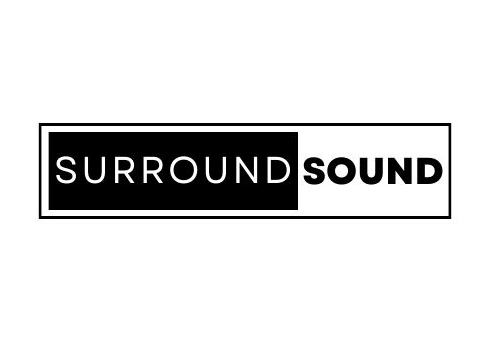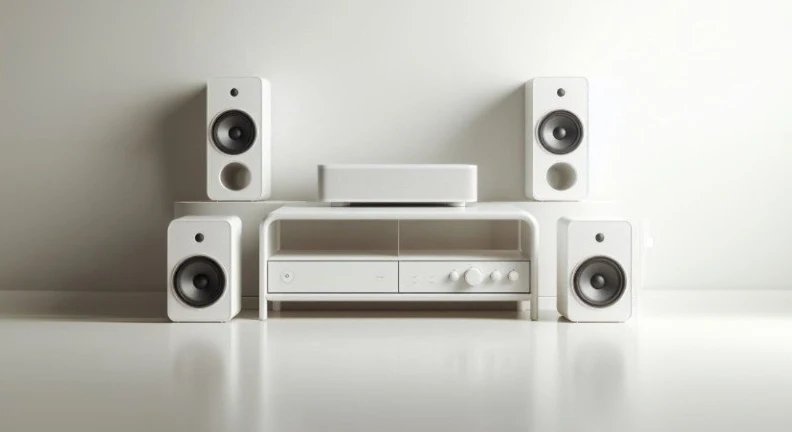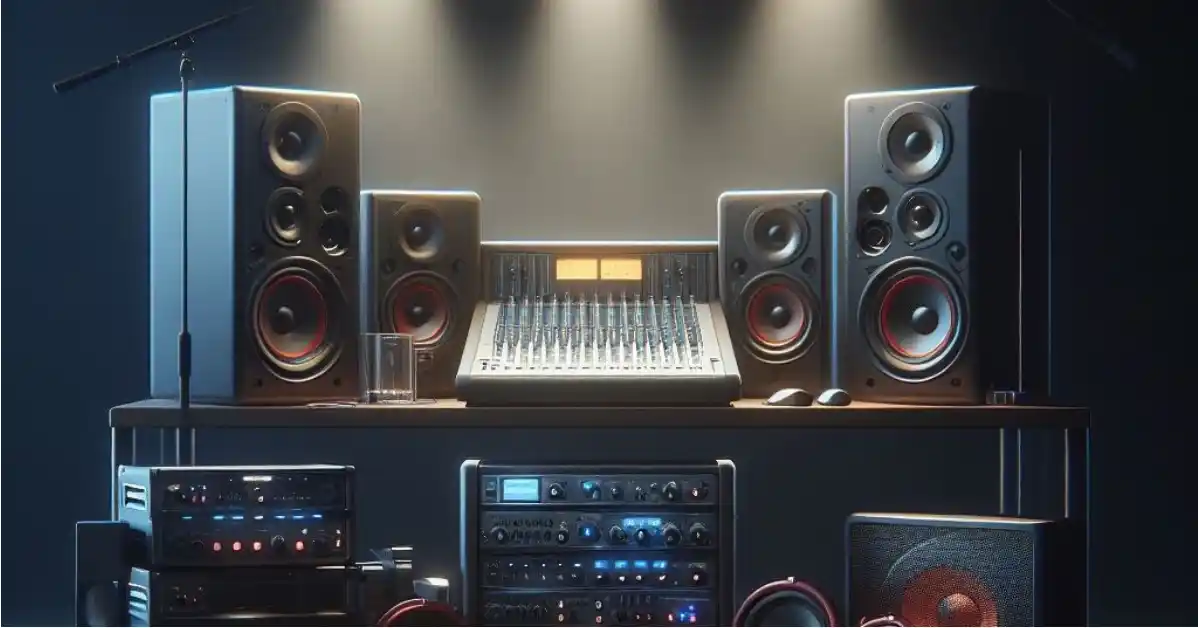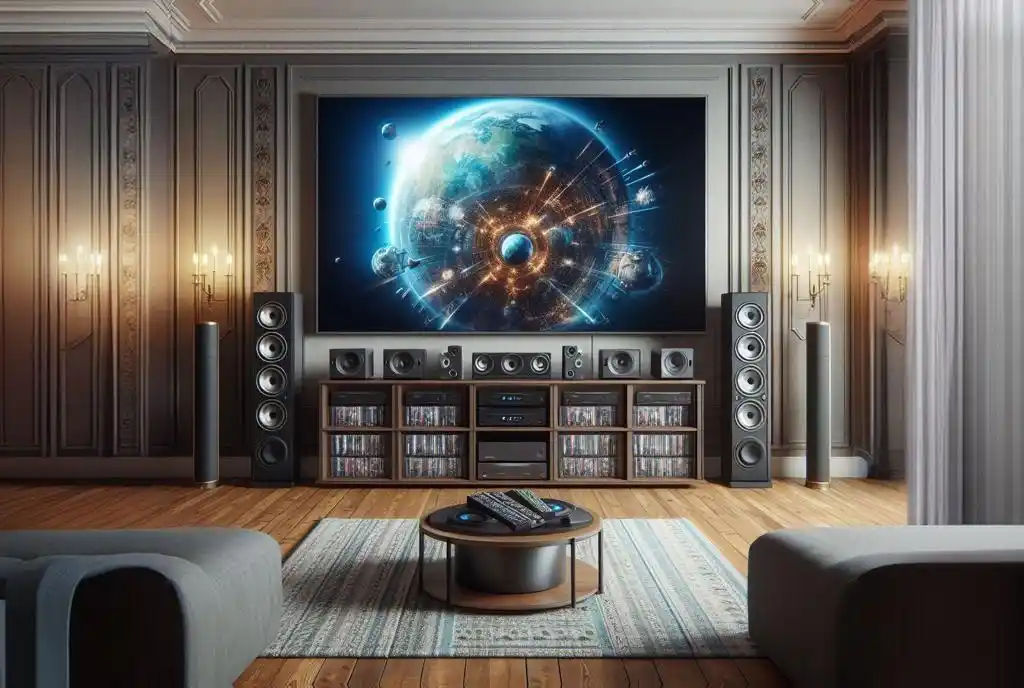The Evolution of Surround Sound: From Quadraphonic to 3D Audio

Surround sound is a technology that enhances the audio experience by creating a three-dimensional sound field that immerses the listener in the source. Surround sound has come a long way since its inception in the late 1960s, with many innovations and improvements over the years. In this article, we will explore the history and development of surround sound, from the early days of quadraphonic sound to the latest object-based formats like Dolby Atmos and DTS:X.
Quadraphonic Sound: The First Attempt at Surround Sound
Quadraphonic sound was the first attempt to create a surround sound system for home use. It was introduced in 1969 and used four speakers placed in the corners of a room to produce discrete sound from each channel. However, quadraphonic sound faced several challenges, such as the lack of a standard format, the high cost of equipment, and the limited availability of content. As a result, quadraphonic sound never gained widespread popularity and faded away by the late 1970s.
Dolby Surround: The Breakthrough of Matrix Encoding
Dolby Surround was the breakthrough technology that made surround sound more accessible and affordable. It was developed by Dolby Laboratories in 1982 and used a technique called matrix encoding to carry a surround sound signal on a stereo source. Matrix encoding allowed the surround information to be extracted from the left and right channels by a decoder in a receiver or amplifier. Dolby Surround used two surround speakers placed behind the listener to create a sense of depth and ambience. Dolby Surround became the standard for surround sound in movies and home theaters, and was later improved by Dolby Pro Logic, which added a center channel for dialogue and enhanced the surround separation.
Dolby Digital and DTS: The Advent of Discrete Channels and Digital Formats
Dolby Digital and DTS are two competing digital formats that revolutionized surround sound by introducing discrete channels and higher quality sound. Dolby Digital, also known as AC-3, was created by Dolby Laboratories in 1991 and used a lossy compression method to encode six channels of audio on a single digital stream. Dolby Digital supported a 5.1 configuration, which added a subwoofer channel for low-frequency effects, and provided discrete sound for each speaker. Dolby Digital made its debut in theaters with “Batman Returns” in 1992 and in home theaters with “Clear and Present Danger” on LaserDisc in 1994. Dolby Digital became the default surround sound format for DVDs and later Blu-ray discs.
DTS, which stands for Digital Theater Systems, was developed by DTS, Inc. in 1993 and offered a similar surround sound format to Dolby Digital, but with a higher bit rate and less compression. DTS claimed to deliver more audio information and better sound quality than Dolby Digital, but also required more storage space and bandwidth. DTS made its debut in theaters with “Jurassic Park” in 1993 and in home theaters with “The Last of the Mohicans” on LaserDisc in 1995. DTS became a popular alternative to Dolby Digital and was also supported by DVDs and Blu-ray discs.
6.1 and 7.1: The Expansion of the Soundstage
6.1 and 7.1 are two surround sound formats that expanded the soundstage by adding more speakers to the rear of the room. 6.1 added a single back surround speaker to create a more enveloping sound field, while 7.1 added two back surround speakers to provide more directionality and separation. Both formats were introduced in the late 1990s and early 2000s, and were available in different versions from Dolby and DTS. For example, Dolby Digital EX and DTS-ES Matrix used matrix encoding to derive the back surround channel from the existing surround channels, while Dolby TrueHD and DTS-HD Master Audio used lossless compression to encode discrete channels for each speaker. 6.1 and 7.1 became more common with the advent of HD DVD and Blu-ray discs, which had more storage capacity and bandwidth to support more channels.
Pro Logic II, IIx, and IIz: The Enhancement of Stereo and Surround Sources
Pro Logic II, IIx, and IIz are three surround sound processing modes that enhanced stereo and surround sources by adding more channels and height information. Pro Logic II was developed by Dolby Laboratories in 2000 and used matrix decoding to create a 5.1 surround sound mix from a stereo source. Pro Logic II also improved the surround separation and sound quality of the original Pro Logic, and had different modes for movies, music, and games. Pro Logic II was widely used for non-HD TV channels and other stereo sources.
Pro Logic IIx was introduced in 2003 and extended the capabilities of Pro Logic II by upmixing 5.1 sources to 6.1 or 7.1, adding more speakers to the rear of the room. Pro Logic IIx also had different modes for movies and music, and was compatible with Dolby Digital and DTS sources.
Pro Logic IIz was launched in 2009 and added two “front height” speakers above and between the main stereo speakers. Pro Logic IIz used matrix processing to create a sense of depth and space by emitting audio from a new location in the room. Pro Logic IIz could be used with 5.1 or 7.1 sources, resulting in a 7.1.2 or 9.1 configuration.
Dolby Atmos and DTS:X: The Rise of Object-Based and 3D Surround Sound
Dolby Atmos and DTS:X are the latest and most advanced surround sound formats that use object-based and 3D audio technology to create a more immersive and realistic sound field. Object-based audio allows sound engineers to place individual sound-producing objects, such as a helicopter or a gunshot, anywhere in a three-dimensional space, and assign them metadata that defines their location, movement, and characteristics. 3D audio enables listeners to hear sounds from above and below them, as well as from the front, back, and sides, creating a more lifelike and engaging sound experience.
Dolby Atmos was developed by Dolby Laboratories in 2012 and was the first object-based and 3D surround sound format to be introduced in theaters and home theaters. Dolby Atmos uses a combination of traditional channel-based audio and object-based audio to create a dynamic and flexible sound mix that adapts to different speaker configurations and environments. Dolby Atmos supports up to 128 audio tracks and 64 speakers in theaters, and up to 34 speakers in home theaters. Dolby Atmos requires dedicated speakers for ceiling-mounted or ceiling-facing speakers in home AV receivers, which are represented by a separate number in the configuration. For example, a 5.1.2 system has five channels, a subwoofer, and two height speakers, while a 7.1.4 system has seven channels, a subwoofer, and four height speakers. Dolby Atmos has become the most popular and widely available object-based and 3D surround sound format, with many movies, shows, games, and music supporting it.
DTS:X is the main competitor of Dolby Atmos and was developed by DTS, Inc. in 2015. DTS:X also uses object-based and 3D audio technology to create a more immersive and realistic sound field, but with some differences from Dolby Atmos. DTS:X aims to be more versatile and adaptable, supporting any speaker configuration and layout, and allowing users to adjust the sound levels and placement of individual objects. DTS:X supports up to 128 audio tracks and 32 speakers in theaters, and up to 32 speakers in home theaters. DTS:X does not require dedicated speakers for height channels, but can use any existing speakers to create the 3D sound effect. DTS:X has not been as widely adopted as Dolby Atmos, but is still available on some movies, games, and devices.
Other Surround Sound Formats and Technologies
Besides the main surround sound formats and technologies discussed above, there are also some other options and innovations that are worth mentioning. Some of them are:
- Auro-3D: A surround sound format that uses a three-level speaker system to create a layered sound field. Auro-3D was introduced in 2006 and requires 11 speakers for a full setup. Auro-3D is not very popular in the US, but has a strong presence in Europe and Japan.
- MPEG-H: A suite of audio and video standards that supports 3D audio and interactive sound. MPEG-H allows users to manipulate individual sound elements, such as dialogue or sound source. MPEG-H is not widely used in North America, but is available on broadcasts in Brazil and South Korea, and on some home theater products.
- IMAX Enhanced: A standard that enhances the visual and audio quality of movies and shows to imitate the IMAX experience. IMAX Enhanced uses a part of the DTS:X codec to achieve deep bass and dynamic range. IMAX Enhanced is still a new standard and may not be widely available for a few years.
- Dolby Atmos Music and Sony 360 Reality Audio: Two 3D immersive music formats that use object-based audio technology to create a more immersive and realistic music experience. Both formats are available on some streaming services, but the devices capable of playing them are currently limited.
Conclusion
Surround sound technology has evolved from quadraphonic sound to object-based 3D audio, creating an immersive and realistic sound experience for the listener. You can enjoy surround sound technology in your own living room with compatible devices, sources, and content, and proper speaker placement and calibration. This blog will help you learn more about the history, evolution, and current state of surround sound technology, and how to create your own surround sound system.
read more at Surround Sound Pro



